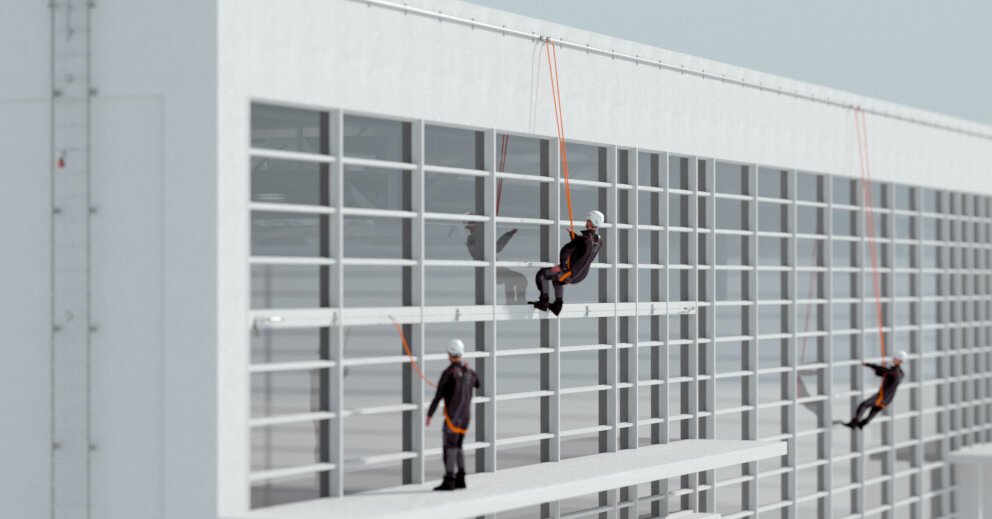Facade work—encompassing the installation, repair, cleaning, and maintenance of building exteriors—is a specialized area within construction that involves significant risks. From working at great heights and dealing with unstable materials to handling heavy equipment and battling adverse weather conditions, facade operations demand rigorous safety protocols. This article outlines key hazards associated with facade work and provides best practices to protect workers and ensure the long-term integrity of building exteriors.
Understanding Facade Hazards
Facade operations can expose workers to a variety of risks, including:
- Falls from Heights: Facade work often requires employees to operate on scaffolds, suspended platforms, or building ledges, where falls can result in severe injury or death.
- Falling Objects: Tools, materials, or debris can become dislodged during installation or maintenance, posing risks to both workers on the facade and pedestrians below.
- Structural Instability: Facade elements may be deteriorated or poorly secured, increasing the risk of collapse during work.
- Weather-Related Hazards: Wind, rain, and extreme temperatures can adversely affect work conditions, complicating the safe use of scaffolding and lifting equipment.
- Manual Handling: Lifting heavy panels, glass, or cladding materials can lead to musculoskeletal injuries if proper techniques and equipment are not used.
Best Practices for Facade Safety
1. Pre-Project Planning and Risk Assessment
- Comprehensive Surveys: Conduct thorough inspections of the building façade to identify potential structural issues, deteriorated components, and environmental hazards.
- Work Method Statements: Develop detailed plans that outline the sequence of tasks, required equipment, safety protocols, and emergency procedures for each phase of the facade work.
- Permit-to-Work Systems: Ensure that all facade operations are authorized through a permit system, which verifies that proper risk assessments and control measures are in place.
2. Engineering and Administrative Controls
- Scaffolding and Access Systems:
- Use certified scaffolding and suspended platforms that are regularly inspected and maintained.
- Install guardrails, safety nets, and secure anchorage systems to protect workers from falls.
- Equipment Safeguards:
- Utilize hoists, cranes, and lifting devices designed for facade work, ensuring they are operated by qualified personnel.
- Incorporate tool tethering systems to prevent objects from falling.
- Weather Monitoring:
- Continuously monitor weather conditions using reliable forecasting tools.
- Postpone operations during extreme weather to reduce risks from wind, rain, or temperature extremes.
3. Personal Protective Equipment (PPE)
- Fall Protection: Equip workers with full-body harnesses, lanyards, and shock-absorbing devices when working at heights.
- Head and Eye Protection: Provide hard hats and safety goggles to protect against falling debris and accidental impacts.
- Gloves and Footwear: Use protective gloves and non-slip, steel-toed boots to minimize injuries from manual handling and work on slippery surfaces.
- High-Visibility Clothing: Ensure that workers wear high-visibility gear, particularly in areas where machinery or moving equipment is in operation.
4. Training and Communication
- Specialized Training: Offer comprehensive training on facade-specific hazards, proper use of access systems, fall arrest procedures, and emergency protocols.
- Regular Toolbox Talks: Conduct frequent safety briefings to review procedures, discuss near-misses, and update workers on any changes in the work plan.
- Clear Communication Channels: Establish robust communication systems (e.g., two-way radios, visual signals) between ground crews and workers at height to coordinate activities and respond swiftly to emergencies.
5. Emergency Preparedness
- Rescue Plans: Develop and rehearse detailed rescue plans for scenarios such as falls or structural collapse. Ensure that rescue equipment, like rescue baskets and winches, is readily available.
- First-Aid and Medical Support: Provide immediate access to first-aid kits and ensure that trained medical personnel are on-site or on-call.
- Incident Reporting: Implement a system for promptly reporting and investigating incidents and near-misses to continuously refine safety practices.
Conclusion
Facade safety is a complex challenge that requires a comprehensive approach integrating engineering controls, strict administrative procedures, proper PPE, and continuous training. By thoroughly assessing risks, using certified access systems, enforcing rigorous safety protocols, and preparing for emergencies, organizations can protect workers and ensure the structural integrity of building exteriors.
Prioritizing facade safety not only reduces the risk of injuries and property damage but also contributes to the long-term success and sustainability of construction projects. Embracing these best practices is essential for fostering a culture of safety and excellence in every aspect of facade work.
Discover more from HSEProHub
Subscribe to get the latest posts sent to your email.



